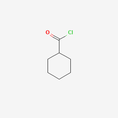Introduction
p - Phenylenediamine (PPD), with the chemical formula C₆H₄(NH₂)₂ and CAS number 106 - 50 - 3, is an organic compound in the form of white to light purple crystalline powder at room temperature. It is an important intermediate in the chemical industry, known for its unique chemical structure with two amino groups attached to the para - positions of the benzene ring. This structure gives it specific chemical and physical properties that are exploited in various industrial applications.
Advantages
1. High Reactivity
PPD is highly reactive due to the presence of two amino groups. This reactivity allows it to participate in a wide range of chemical reactions, such as condensation, diazotization, and coupling reactions. It serves as a fundamental building block for the synthesis of many complex organic compounds, enabling the production of a diverse array of products.
2. Versatile Applications
It has a broad spectrum of applications across multiple industries. In the dye industry, it is used to create a wide variety of colors, from natural - looking shades to vivid and intense hues. In the rubber industry, it acts as an antioxidant and antiozonant, enhancing the durability and lifespan of rubber products.
3. Cost - Efficiency
PPD offers a cost - effective solution for many industrial processes. Its relatively low cost compared to some alternative chemicals, combined with its high reactivity and effectiveness, makes it an attractive choice for manufacturers looking to optimize their production costs without sacrificing quality.
Applications
1. Dye Industry
PPD is a key ingredient in the production of oxidative hair dyes. When mixed with an oxidizing agent, it undergoes a chemical reaction to form colored compounds that penetrate the hair shaft, providing long - lasting and vibrant hair color. It is also used in the textile and leather dyeing industries to produce a wide range of colors on various materials.
2. Rubber Industry
In the rubber industry, PPD is used as an antioxidant and antiozonant. It helps prevent the degradation of rubber products caused by oxidation and ozone exposure, thereby extending their service life. This is particularly important for products such as tires, hoses, and seals, which are exposed to harsh environmental conditions.
3. Pharmaceutical Industry
PPD serves as an intermediate in the synthesis of certain pharmaceuticals. It participates in the construction of the molecular structure of drugs, contributing to the development of new medications with specific therapeutic effects.
Frequently Asked Questions (FAQ)
Q1: Is PPD safe to use?
A: PPD can be hazardous if not handled properly. It is known to cause skin irritation, allergic reactions, and is toxic if inhaled, swallowed, or absorbed through the skin. However, when used in accordance with strict safety guidelines and regulations, it can be used safely in industrial applications. It is essential to perform a patch test before using PPD - containing products, especially in hair dyes, to check for allergic reactions.
Q2: How should PPD be stored?
A: PPD should be stored in a cool, dry, and well - ventilated area, away from sources of heat, ignition, and direct sunlight. It should be kept in a tightly sealed container to prevent moisture and air from entering, as this can cause oxidation and degradation of the product. Additionally, it should be stored separately from incompatible substances, such as oxidizing agents and acids.
Q3: What are the disposal methods for PPD?
A: Disposal of PPD should be carried out in accordance with local environmental regulations. It is recommended to contact a licensed waste disposal company to handle the proper disposal of PPD waste. Do not dispose of PPD in regular trash or pour it down the drain, as it can cause environmental pollution.
Q4: Can PPD be used in food - related products?
A: No, PPD is not suitable for use in food - related products. Due to its toxicity, it poses a significant risk to human health if ingested. It is strictly used in industrial applications such as dyeing, rubber manufacturing, and pharmaceutical synthesis.
Q5: What safety precautions should be taken when handling PPD?
A: When handling PPD, appropriate personal protective equipment (PPE) should be worn, including gloves, goggles, and a respirator. Work areas should be well - ventilated to prevent the inhalation of dust or vapors. In case of skin contact, immediately wash the affected area with plenty of water and seek medical attention if irritation persists. In case of inhalation, move the person to fresh air and seek medical help if breathing difficulties occur.
Hot Tags: safety data sheet ppd, China safety data sheet ppd manufacturers, suppliers, factory, pharmaceutical intermediate brokers, pharmaceutical intermediate promoters, pharmaceutical intermediate dealers, pharmaceutical intermediate packaging, pharmaceutical intermediate output, pharmaceutical intermediate process








